Forehand and Backhand Serves
This is an excerpt from Pickleball Fundamentals by USA Pickleball Association.
Forehand Serve
Most commonly used is a forehand drive serve. Stand in a forward stride position behind the baseline with your left shoulder pointing toward the target and your weight on your back foot. The ball is in your left hand, and that arm is extended toward the net. Bend at the waist, take your paddle arm back, drop or toss the ball between you and the target (figure 4.3a), swing your paddle arm forward in an underhand motion, and contact the ball below your waist (4.3b). After ball contact, follow through by bringing your arm up and toward the target (4.3c).
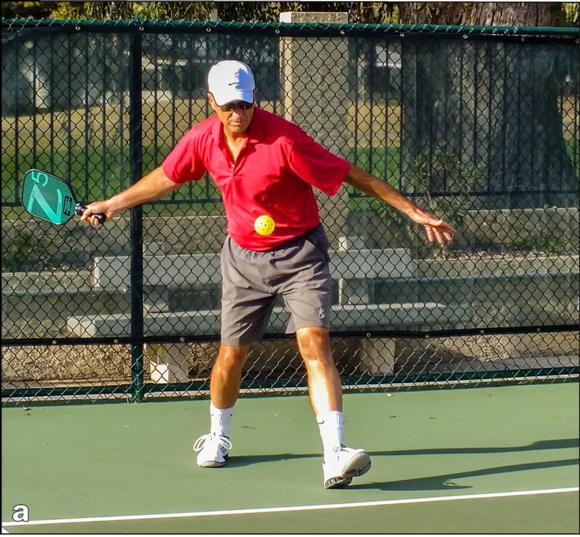
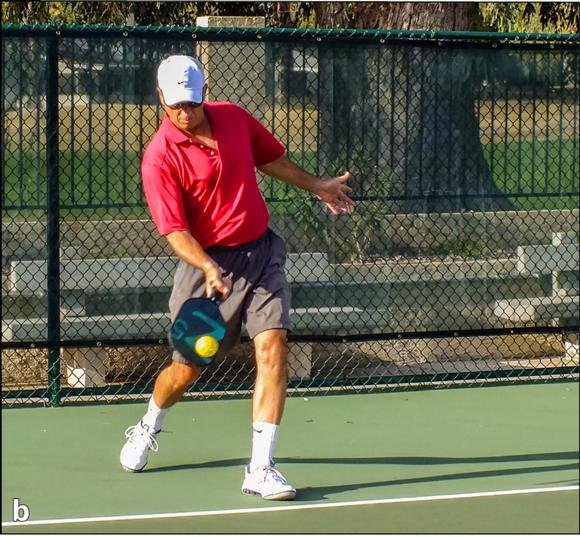

The forehand drive serve: (a) preparation, (b) contact, and (c) follow-through.
Another serve option is a short crosscourt one that lands just beyond the non-volley line. After a series of deep serves, the opponent will likely not expect a short crosscourt serve, which may lead to an easy point.
A third option of serving and perhaps the easiest to execute is the lob serve. When executing a lob serve, stand in a balanced upright position with your body facing the net and your left foot slightly ahead of the right foot. The paddle arm hangs loosely at your side with the paddle in a backward cocked position. Hold the ball in your left hand with that arm in line with the target (figure 4.4a). Drop the ball, swing the paddle arm forward, and make contact with the face of the paddle behind and below the ball (4.4b). Follow through up and toward the target (4.4c). The ball should be lofted and land deep in the intended service court. A lob serve is an excellent serve to mix in with a forehand drive serve. The slow speed of the ball as well as the high bounce often throw off the timing of the receiving player.
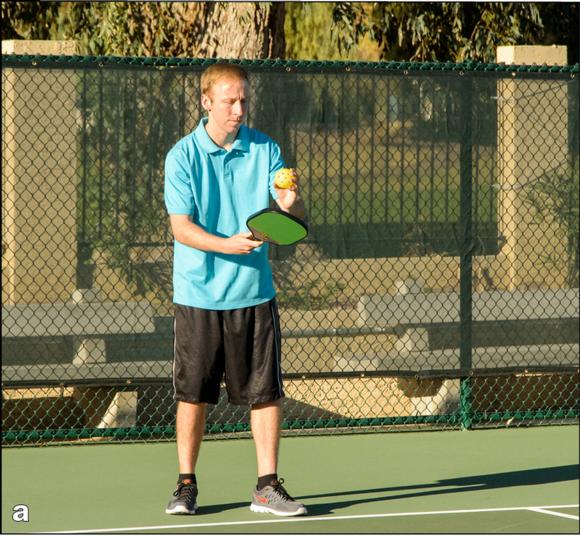
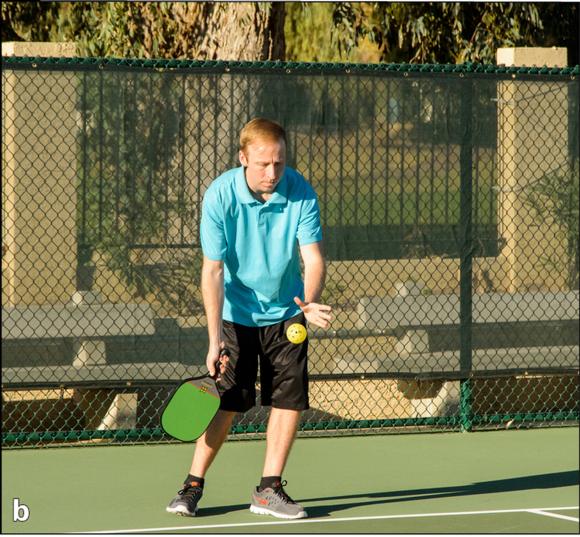

The lob serve: (a) preparation, (b) contact, and (c) follow-through.
So off of the forehand are three possible choices of serve: a hard-driven serve, a shallow crosscourt serve, and a lofted lob serve. Your decision about which serve to use depends on the position of the player receiving the serve and also how that player tends to react to and handle each kind of serve.
Backhand Serve
Players who cannot control the flight of the ball when using a forehand serve may find that a backhand serve works better. Some players who excel in using a forehand serve also find it useful to have the backhand serve in their arsenals. Just as there are variations of the forehand serve, there are variations of the backhand serve. Most common is for a right-hand player to assume a side-stride position behind the baseline with the right side toward the net. The right foot points to a spot between the net and the left sideline (figure 4.5a). The ball is in the left hand, and the arms are crossed in front of the body. The ball is dropped in line with the intended target, and the paddle arm swings forward and contacts the ball as it travels downward (4.5b). The swinging arm continues in a follow-through motion toward the target (4.5c). This serve is easy to execute because only the upper body of the server moves. It is also deceiving to the receiver and difficult to return because of a natural sidespin on the ball.
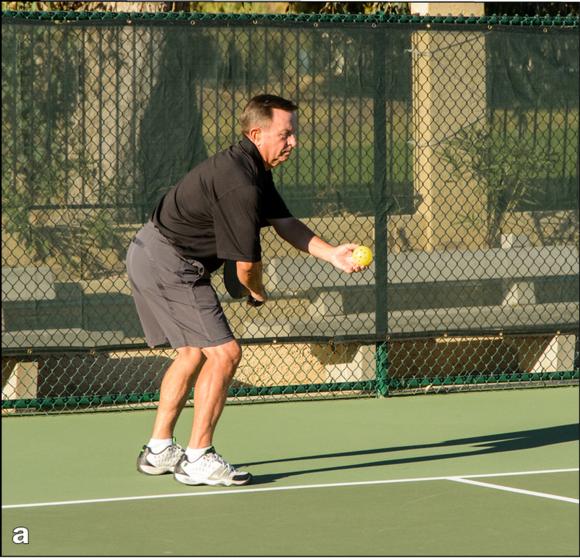

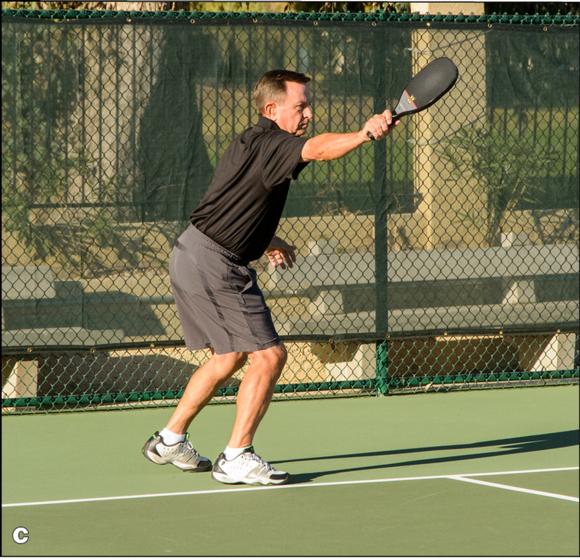
The backhand serve: (a) preparation, (b) contact, and (c) follow-through.
How you serve the ball and how you look while serving are incidental as long as you serve legally and successfully. Try several methods of serving until you find one that works for you.
When you play doubles, your position behind the baseline when serving is somewhat dependent on the type of serve that you plan to use. However, it's not wise to vary your position too much because it will telegraph to your opponents the type of serve that you plan to use. For example, if your intent is to hit a short crosscourt serve, you can get more of an angle on the hit ball if you stand close to the sideline rather than in the center of the court. Other than that, you should maintain a position behind your baseline in a position that enables you to cover your half of the court on the return of the serve.
When you play singles, the strongest position for serving is close to the center line. This puts you in a strong position from which to move either to the right or to the left to get to the return shot.
Learn more about Pickleball Fundamentals.
More Excerpts From Pickleball Fundamentals

Get the latest insights with regular newsletters, plus periodic product information and special insider offers.
JOIN NOW
Latest Posts
- Outdoor recreation and adventure activities lead to positive health outcomes for children
- Schools offer a wide variety of adventure programs for children
- Using sport to change society
- Despite progress, equity remains a pressing challenge for women in sport
- What today’s athletes expect from coaches
- Barriers to youth participation in physical activity and sport


